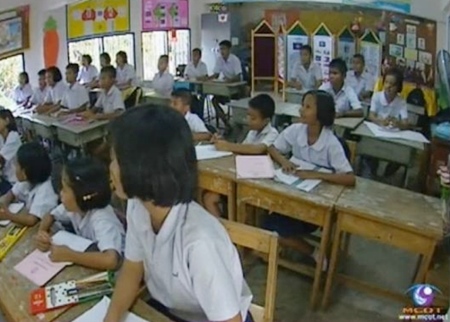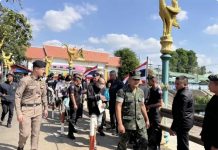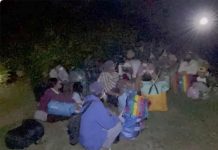Whether you say “Mingalaba” or “Sawadee”, the dreams of young children, regardless of which language one speaks, are not indifferent.
The dream of a 14 year-old Myanmar boy named Mogun is to become a doctor. Surely, this is a dream shared by many young Thais. Although given the opportunity to begin school at an older age than his peers, it has not been an obstacle for Mogun to continue studying hard.

“My dream is to finish Mathayom 3 and further studies,” Mogun said.
“If we still don’t have money for tuition, then I doubt my son will get to study further. But I’ve been telling him every single day to go to school so he can have a brighter future,” Mogun’s mother said.
Wat Srisudaram School in Samutsakorn province is one that welcomes students from all ethnic backgrounds. With Thais, Mons, Myanmar people, Lao and Cambodians all studying together, these 200 students are able to receive the same education regardless of their different nationalities and backgrounds. Most of the students’ parents are illegal immigrants but it has not been a barrier in their receiving primary education.
The school’s registration process involves fingerprinting along with other details of both the student and the parents, as well as completing a basic survey of the pupil’s background.
For students that do not have national identification cards or are stateless, these details are processed with the Interior Ministry, which then issues a special 13-digit identification card.
“The Interior Ministry issues an ID card for the students so they can officially sit in the national exams such as the O-Net exam. With this they are not missing out, and are entitled to take all exams that Thai nationals are taking,” Pisarn Nuntasay, Director of Wat Srisudaram school, said.
As a hub for migrant labour from Myanmar, Samutsakorn province houses up to 71 schools which welcome children of migrant parents to enroll in and receive the primary education they deserve.
With 104 schools in total, Samutsakorn is a leading example of a province which realises the urgent need to welcome migrant-labour families into the official system as well as understanding how important access to primary education is as a basic human right.
With estimates of up to 8,000 migrant children under the age of 15 living in Samutsakorn province alone, their access to proper schooling is still limited. It is also restricted because the employers of migrant parents or related-organisations must initially endorse and give permission for the children to attend school.
“I view that Thailand, from past to present, has never denied access to primary education for all nationals. But still, there may be some unsympathetic individuals who do not recognise this, which clearly is beyond my comprehension,” Dr Puntip Kanchanajittra Saisuntorn, Faculty of Law, Thammasat University.
Yet, statistics reveal that up to 90 per cent of children of migrant parents do not continue studying after the Mathayom 3 level, as there are various ‘push-and-pull’ factors that drive them out of the educational system to work as full-time labourers themselves even though they are children.
Bearing in mind the approaching ASEAN Community in 2015, it is of urgent necessity for government, related agencies, and development specialists to realise the need to formulate an ASEAN curriculum that will truly benefit all.




